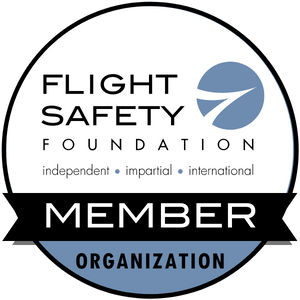Five Pain Points faced by Maintenance Organizations with SMS
Maintenance organisations are now required to implement a Safety Management System (SMS) in Europe — and other regions will likely follow suit. TrustFlight spoke with several experts and others to identify five pain points related to SMS for maintenance organisations, and potential solutions.
1. Management may see SMS as a box-ticking exercise
Maintenance management teams are focused on hitting targets — as they should be. A 1% savings in maintenance costs for an airline can mean the difference between profitability and bankruptcy. SMS may be viewed as a distraction from those goals, as we learned in our interviews with business jet and airline operators. "A functioning SMS is not a box-ticking exercise," said Andy Wilkinson a long-time industry executive and MRO expert. “SMS in the maintenance context requires a paradigm shift in collective thinking to embrace error, identify and report hazards and events within the work-place. With that engagement comes a reporting culture, and a multitude of data to process alongside, which requires buy-in from management and staff alike, Wilkinson explained.
A maintenance executive at one business jet operator said that prior to implementation of SMS, his management team was “totally anti-SMS,” explaining that even with the regulator implementing the change as a matter of regulation, “they didn’t want to invest in it,” he said. The solution was to implement a hierarchy that tracked the cost of every incident reported into the SMS. “At the end of the first year, I was able to produce a budget with line items for the cost of every occurrence. A functioning SMS reduces that, and we used Centrik (TrustFlight’s SMS software) to get it done.”
Did the manager ultimately change the tune?
Indeed. “He became the biggest SMS champion.”
2. Maintenance lacks visibility of the true risk picture in the organization
Event risk identification is part of the SMS process. Typically, risk is defined as ‘low’, ‘medium’, or ‘high’. “With a safety culture and proper SMS software, a maintenance team can link the concept of event risk to the organisation’s global operational risk register. This provides the operator a holistic risk picture for the organisation,” said Wilkinson. “This is not easily visible unless the team can link to occurrences,” he said. “It’s critical that alongside a severity likelihood assessment, the team can see the cumulative event risk score from all of the SMS occurrences. That's not a best guess, but rather a real-time event risk score from actual occurrences processed by SMS professionals.” The end result is a continuous process that highlights where risk lies in an organisation.
3. Engineers are wired to tell you what’s wrong, and fix what’s broken. A shift in approach comes with SMS.
“God bless the aircraft engineer,” Wilkinson said. “With a healthy SMS, engineering sees SMS as a tool — a repository for submitting defects and areas for improvement.” These defects are assessed, categorised, mitigated, and responded to. Everyone in the system has visibility into the program — a positive feedback loop. “Engineers will see themselves as contributing to positive change in the structure of the maintenance organisation,” Wilkinson said. TrustFlight has previously written about the SMS culture shock, given the sea-change that maintenance organisations face.
4. Visualizing and analyzing SMS-related data is time-consuming and difficult
Managers will be familiar with the days —and nights— required to produce a visualisation of risk — for internal purposes or simply to satisfy a regulator. With a working SMS and an operational management system like TrustFlight’s Centrik, a team can generate KPIs with the click of a button. “Centrik has already considered the type of data that an operator would like to visualise, in seconds,” said Wilkinson. “And it can do that in real time. There’s no point in reinventing the wheel.”
5. Demonstrate SMS compliance to the regulator
SMS for MROs is here to stay. It is a top down approach from the regulator. Managers best get on with the task of compliance. For its part, EASA does not understate the changes to a maintenance organisation. According to the agency, “the implementation of SMS implies significant changes to procedures, processes, and organisational structure.” The use of specialised software may be the best way to accomplish this goal. “I started my SMS journey on paper and spreadsheets it's almost impossible to manage,” said Wilkinson. “We had a healthy SMS culture with lots of occurrence reports — say 10 to 20 reports per week to categorise and classify, along with the data to extract. Then, you need to investigate each issue, and mitigate and monitor. Excel quickly becomes unworkable.”
Find out more about Centrik, TrustFlight’s SMS solution or get in touch with one of our MRO experts.
Let's get started
Talk to our sales team to find out how you can transform your operation with our products and services.

